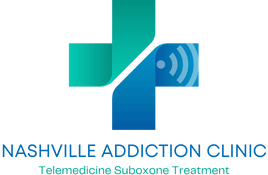How to Avoid Precipitated Withdrawal: What Every Patient Needs to Know

If you’ve read anything about Suboxone treatment, you’ve probably come across a scary phrase: precipitated withdrawal.
For many patients, just hearing that term is enough to delay starting life-saving treatment.
But here’s the truth: precipitated withdrawal is 100% avoidable — if you know what to look for and follow a few simple guidelines.
This article explains what it is, how it happens, and steps to help prevent it from happening to you.
🧠 What Is Precipitated Withdrawal?
Precipitated withdrawal is a sudden and intense form of opioid withdrawal that can occur when you start Suboxone (buprenorphine) too soon after using opioids like heroin, oxycodone, fentanyl, or morphine.
Here’s why it happens:
-
Suboxone contains buprenorphine, which pushes other opioids off your receptors
-
If your receptors are still full of stronger opioids, Suboxone triggers a chemical “eviction”
-
This causes a flood of withdrawal symptoms — all at once
🩺 In plain terms? Your body goes from “opioid high” to “suddenly empty” — and it feels awful.
🚨 What Does Precipitated Withdrawal Feel Like?
Patients describe it as:
-
Severe nausea and vomiting
-
Intense anxiety or panic
-
Sweating, chills, and goosebumps
-
Racing heart
-
Full-body aches
-
Feeling like “the worst flu of your life times ten”
The good news? It’s rare — and totally preventable when induction is done correctly.
✅ How to Avoid Precipitated Withdrawal (Step-by-Step)
1. Wait Until You’re in Moderate Withdrawal
This is the golden rule.
You must wait until your body has already started to detox naturally — meaning you’re already in moderate withdrawal before taking Suboxone.
💡 For most people, this means waiting:
12–24 hours after short-acting opioids (e.g., heroin, oxycodone)
36+ hours after long-acting opioids (e.g., methadone)
2. Use the COWS Scale (If Your Clinic Offers It)
Many providers use the Clinical Opiate Withdrawal Scale (COWS) to assess your readiness for Suboxone. It measures:
-
Heart rate
-
Sweating
-
Restlessness
-
Pupil size
-
Anxiety level
-
GI upset (nausea, cramping)
A COWS score of 8–12+ usually means it’s safe to start.
Don’t have access to a provider scoring you in person? That’s okay — just go by your symptoms (see next step).
3. Recognize the Right Withdrawal Symptoms
Here are signs that your body is ready:
✅ Safe to start Suboxone:
-
Yawning constantly
-
Runny nose and teary eyes
-
Dilated pupils
-
Mild muscle or joint aches
-
Nausea or stomach cramps
-
Sweating or goosebumps
-
Feeling restless or anxious
❌ NOT ready if you still feel:
-
Calm or sedated
-
Warm and comfortable
-
Drowsy or nodding off
-
Recently used (even “just a little”)
4. Be Honest With Your Provider
Your Suboxone doctor is not there to judge you — they’re there to help you avoid unnecessary pain.
If you used more recently than you’re supposed to, tell them. They’ll help you adjust the timing or dose accordingly.
🔄 Many clinics (including ours) offer telehealth support during induction, so you’re never alone.
5. Start With a Low Dose, Go Slow
A common induction strategy is:
-
Start with 2mg of Suboxone
-
Wait 60–90 minutes and assess how you feel
-
Increase gradually under guidance (up to 8–16mg total)
This “test dose” approach helps prevent problems before they happen.
🏥 Our Suboxone Induction Protocol (Telemedicine Friendly)
At Nashville Addiction Clinic and Recovery Care of Columbia:
-
We walk you through induction via telemedicine
-
We assess your symptoms before you start
-
We adjust your dose based on your comfort
-
And we offer ongoing support throughout your treatment
🧭 Summary: How to Avoid Precipitated Withdrawal
✅ Wait long enough after your last opioid use
✅ Watch for real withdrawal symptoms
✅ Be honest with your provider
✅ Start with a low dose under supervision
✅ Avoid long-acting opioids like methadone or fentanyl unless advised
💬 “I was actually in withdrawal, nervous and doubtful Suboxone would work. Once I took Suboxone, I felt better within 30 minutes. Suboxone saved my life. Counseling helped me change it.”
— Drew Bourke – Co-Owner/President at Recovery Care of Columbia
📞 Ready to Start Suboxone — the Safe Way?
We provide 100% telemedicine Suboxone treatment throughout Tennessee, with induction guidance and real-time support.
👉 Register with Medicaid
👉 Register with Commercial Insurance
👉 Register as Self-Pay



